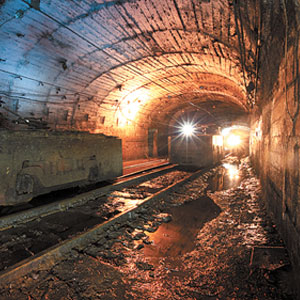Industry creates profit and products we can all use, but it often comes at a significant cost. The positive outcome of hydraulic fracturing is the discovery of more usable natural gas, but one frequently mentioned downside is the way water is used in the process. Not only does the fracturing process use a lot of water, the flowback water it produces as a by-product contains chemicals that cause concern among some members of the public.
Although the industry believes the flowback water is safe, it’s harder to convince the public of the same. And everyone, public and private industry alike, agrees that water is a limited resource. That’s why researchers at Duke University have been working to develop a new technology that would allow reclamation and neutralization of flowback water.
The Research

|
|
Researchers at Duke University found water from mining operations and water from hydraulic fracturing could effectively cancel each other out, yielding water clean enough to put back into fracking. Source: iStock |
Dr. Avner Vengosh was one of the leading geological researchers working on a team at Duke University to study this new technology. “We noticed that the water from the Marcellus Shale had a very high level of naturally occurring radioactivity,” says Vengosh. “We knew that when you combine high barium levels with sulfate, it creates barite. Then barite binds the other contaminants in the water, like radium and strontium.”
That gave the team of researchers an idea that introducing flowback water to water from mining could potentially reduce the amount of toxicity in the water.
“We conducted an experiment in the lab where we mixed the flowback water with effluent from mining,” he says. The researchers found that their hypothesis seemed to be correct and the combination of the two types of water did reduce the toxic chemicals within it.
The current system requires the existence of new treatment facilities for disposing of the wastewater produced as a byproduct of fracturing. This can be a problem though, because a lot of communities are resistant to the idea of allowing the creation and hosting of wastewater disposal facilities. “The advantage of our idea is that instead of taking wastewater and putting it in a treatment plant, we can combine it with effluent to make it safer. Then it can be recycled and reused in new fracking efforts instead of requiring disposal,” Vengosh said.
The Marcellus Shale region in the northeastern United States has been a big source of environmental controversy in recent years. Because the region covers many states and includes some heavily populated areas, there has been a large amount of public concern about the environmental and public health impact of the ongoing drilling project. The potential applications of the Duke research could significantly minimize the amount of water required in drilling and could reduce the amount of land required for new disposal facilities to get rid of the toxic wastewater.
Applications and Uses
One of the biggest concerns with fracturing is the issue of possible contamination in the wastewater. “At the fracking sites, they try their best to contain all of the contaminants in the wastewater before disposal, but some of those contaminants still seep through. It’s nearly impossible to contain all of it,” Vengosh says. Because the Duke system would essentially cancel out the contaminants in wastewater, including naturally occurring radioactivity in certain regions, it would address and eliminate many of the public concerns about the environmental impact.
Also, the system can have a major impact on many aspects of how the fracturing industry uses water and researchers hope to move to onsite testing. “We would like to start field testing it, so we have started reaching out to the industry and hope they will begin trials,” Vengosh says. One of the questions that needs to be addressed is how to transport wastewater to mining effluent. “How we would move the wastewater to combine it with the mine drainage would likely depend on many factors, like the location of each and cost of transport,” Vengosh says.
The most important benefit of the system is that it could enable the recycling of water, which would reduce the amount of water required for fracking operations. This is a very serious concern, considering that many areas of the country are experiencing major water shortages and fracturing efforts require so much water. For example, a typical single well in Pennsylvania at the Marcellus Shale will use 4.3 million gallons of water. Since there are fracturing operations all over the country, it’s easy to understand that the water use is staggering. The EPA estimates that the water use in fracking across the country equals the water needs to support 40 to 80 cities with 50,000 people in each.
Particularly in the western United States, water shortages are putting limits on fracking operations—and leading the public to call for bans on fracking. Cities in the west that are dependent on the Colorado River basin are experiencing water shortages, which many residents are blaming on fracking.
The Duke researchers think that their discovery may provide the solution to some of these public concerns, which could create a win-win situation of reducing water usage without limiting development. “We hope to encourage drillers to start thinking about other ways they can reuse marginal water instead of using fresh water,” Vengosh says. “We really want to encourage the industry to look at alternative sources for water. I think it’s really going to be necessary as we move into the future and water becomes scarcer around the world.”


Report Abusive Comment